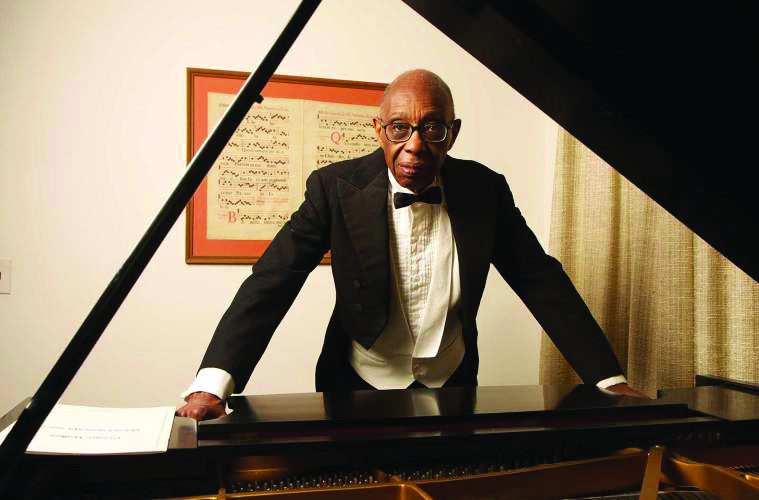STRING QUARTET NO. 1
George Walker
(b. Washington, DC, June 27, 1922; d. Montclair, NJ, August 23, 2018)
Composed 1946; 22 minutes
 The late composer, pianist and educator George Walker earned a string of ‘firsts’ during a long life. They were capped by becoming the first black composer to win the Pulitzer Prize when he was 74, with his stirringly evocative Lilacs, for voice and orchestra. Recognition for his achievement, however, did not reach far. Twenty years later, in 2015, The Guardian’s international edition ran a story headed “George Walker: the great American composer you've never heard of.”
The late composer, pianist and educator George Walker earned a string of ‘firsts’ during a long life. They were capped by becoming the first black composer to win the Pulitzer Prize when he was 74, with his stirringly evocative Lilacs, for voice and orchestra. Recognition for his achievement, however, did not reach far. Twenty years later, in 2015, The Guardian’s international edition ran a story headed “George Walker: the great American composer you've never heard of.”
While teaching paid the bills – he was a professor and chaired the music department at Rutgers University 1969-92 – Walker remained productive as a composer. His catalog includes over 90 works. “Why keep working?” Walker was asked when in his nineties. “I want more people to hear my work,” he replied. “I want people to get acquainted with my music.”
Walker wrote his String Quartet No. 1 at the age of 24, shortly after graduating from Curtis, in 1946. Its confident, tautly drawn opening theme and lyrical closing cadence, immediately repeated a step higher, at once commands our attention, becoming the seed from which much of the opening movement is constructed. “For some reason, in my early 20s, I was determined to write a string quartet,” Walker recalled shortly before his death. “I had just written the first movement and was starting the second when I learned that my grandmother had died.” At the beginning of the resulting slow movement, a calm, spacious atmosphere is established as the strings interweave a somber falling phrase, broken by reflective chordal cadences. At the midpoint, the music builds to an intense climax as the chords turn jagged and bring a short-lived lyrical melody. But the prevailing mood remains somber to the concluding chords. The music quickly gained traction as an independent piece. Like Samuel Barber’s Adagio for strings (1936), which is also the slow movement of a string quartet, Walker’s Molto Adagio (later retitled Lyric for Strings) can generate a profound feeling of loss, hope and comfort in an audience. Elements of this somber mood linger in the reflective, sometimes wistful episodes of the rondo finale. Here, as in the opening movement, the energy is primarily drawn from contrapuntally forward moving instrumental lines, together with a determinedly upbeat ending.